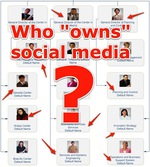This guest post on the topic of Do Not Track is written by Tim Stoute, Co-CEO & CTO of Toronto-based eyeReturn.
Online advertising is appealing because it is effective and measurable. The "Ad Tech" industry is a competitive and innovative space, where disruptive new techniques are frequently introduced to provide advertisers new tools, reports, and efficiencies for their advertising dollars. One of these new technologies is behavioral advertising. Behavioral advertising allows online systems to classify web-surfing habits and target specific advertisements based on the classification - this, as you know, makes the advertising more efficient for the advertiser, and more relevant to the end user.
While behavioral advertising is both anonymous and a benefit to all parties, some people perceive the practice as intrusive and infringing on user privacy. Recognizing these concerns, the online advertising industry has worked together to form standards, regulations and opt-out systems. One of these standards is called Do Not Track (DNT).
more »
There is an article over on the HubSpot blog written by your truly that you really should read. It's well understood that most, if not all, of us who have toiled in the world of marketing and advertising understand that what we do is supposed to sell stuff, not win awards. Alas, sitting on the Carlton Terrace in Cannes sipping rose is hard to pass up if one is lucky enough to have that experience.
Winning awards is all well and good and can greatly benefit one's career and an agency's ability to win new business. We won't dispute that but too much emphasis is placed on the glamour of advertising rather than its intended purpose; to create a smooth, gentle pathway that moves people along to a point at which they decide to open their wallets and hand over their hard earned cash for your (or your client's) products or services.
more »
A long time ago in a galaxy far, far away, Chief Executive Officers hired Chief Marketing Officers to make sure all their ads looked pretty and their television commercials were shot by really cool Hollywood directors. And maybe they hoped for a few sales leads as well, but that was asking a lot.
Flash forward to today, and CEOs are demanding much more from their CMOs. Both because they need to, and because the tools and services available to a CMO make it possible.
more »
In my years as an agency media director and account director, I worked with many different personality types - including one long-term client who, for many years, wouldn't respect me or my work. One day he angered me so much I screamed at him for five minutes straight, telling him I knew exactly what the hell I was doing and he should shut up and listen to what I have to say.
While I certainly don't recommend letting your anger get the best of you or screaming at your clients, in this particular case my years of attempting to placate, coddle and generally bend over for this particular client never worked. It wasn't until I stood up to him with the same forceful authority he always commanded that he respected me. And from that point on, our relationship was wonderful.
Read the rest on the Central Desktop blog.
By now most of you have heard the term Native Advertising. And, yea, we can see you throwing your hands up in the air and screaming, "What's up with all these people who feel the need to slap a new label on something that's been around since consumer packaged goods companies created the soap opera?"
But as you well know, this industry loves its buzzwords. Now before you toss this off as the Cue Cat of 2013, consider this; Native advertising, done right, is not an advertorial. Native advertising, done right, is not product placement. Native advertising, done right, offers valuable, educational, useful information to your customers and prospects.
Check out this article I wrote for HubSpot entitled How Inbound Marketing Can Fuel Native Advertising to make sure your native advertising efforts are doing everything they can at every stage of the marketing process.
In the early days of social media, the market was flooded with "social media gurus" and agencies that added social media-related bullet points to their new business decks and called themselves experts in the space. Very thankfully, there is less of that nonsense today, the segment has grown up and the market has become more mature.
But it's still not exactly clear with which entity the responsibility for a brand's social media program sits. Some argue the specialized expertise of agencies and PR firms are still needed to guide brands through the maze of social media opportunities. Others argue it's inefficient and leads to less effective engagement when outside parties are involved and, therefore, advocate for social media to be handled internally. In fact, Edelman coined the term "social business" to describe the proliferation of social media practices at the enterprise level.
Read the rest on Central Desktop's blog...
There's been a lot of discussion lately about "programmatic premium"- using machines to fully automate the purchase of premium advertising inventory. It seems like every conference lately has someone from Kellogg's on a panel saying programmatic premium is GR-R-REAT with very impressive statistics to support their claims.
The Ad Exchanges, DSPs, DMPs, SSPs, and various other TLAs (three letter acronyms) you see on Terry Kawaja's Display Lumascape have certainly been successful at automating the buying and selling of remnant inventory. But remnant inventory represents only a small slice of advertising spending. According to Mike Leo, CEO of Operative, only 18% of digital media advertising budget is spent through exchanges.
more »
In this guest post, Topline Communications Head of Video Production Jamie Field outlines the steps he feels need to be taken to increase the likelihood a video will go viral. Topline Communications is a video production, PR, social media and SEO consultancy, based in London
Viral is the holy grail of video marketing. Everyone wants to commission a viral video, but briefing your video production company to make you one is ridiculous. That's because a video that becomes as contagious as swine flu cannot be achieved by a cameraman editor producer and director.
Instead, the concept needs to come from within your company - and your PR department is probably the best place to start. Aren't they the people that generate story ideas that are designed to appeal to the highest possible percentage of your target audience? (If they aren't then your department is costing you money!).
more »
As you may have read, a Perth teenager, reportedly Matt Corby, posted a picture (which was Liked 100,000 times before disappearing) of a footlong sub with a tape measure on it showing the sub just 11 inches long. Predictably, an epic firestorm ensued on social media. And some responses by Subway don't seem quite as genuine as they should.
Subway Australia responded (post that begins with "Who LIKES the sound of free avo on their sub?!") to the swirling tempest in a teacup by saying, "With regards to the size of the bread and calling it a footlong, "SUBWAY FOOTLONG" is a registered trademark as a descriptive name for the sub sold in Subway Restaurants and not intended to be a measurement of length."
On its Facebook pages around the world, Subway is responding but many of its comments are simple deflections and reiterations of the fact the sub is simply called a footlong but that baking processes can affect actual length
more »
Just what the hell is this new Mono-created Target ad attempting to convey?
Climbing a ladder in heels is difficult? Women are "challenged" by ladder climbing? Life throws many curve balls in a woman's path? Women don't know how to screw and unscrew a light bulb?
And how about the rest of the ads in the series?
more »

|











